
Branka Prpa, (born 1953 in Split, PR Croatia, FPR Yugoslavia) is a historian, author, and former director of Belgrade's Historical Archives (Istorijski arhiv Beograda). [1] [2]

Branka Prpa, (born 1953 in Split, PR Croatia, FPR Yugoslavia) is a historian, author, and former director of Belgrade's Historical Archives (Istorijski arhiv Beograda). [1] [2]
In 1972, against the wishes of her family, she left Split for Belgrade to study history at the University of Belgrade Faculty of Philosophy. [1] Soon, she got married, had a son, and remained living in the capital even after she graduated. In 1988, her book about Serb publishing in Dalmatia entitled Srpsko-dalmatinski magazin was published. Prpa, an ethnic Croat, is better known to the public as the girlfriend of the slain Belgrade journalist and newspaper owner Slavko Ćuruvija with whom she lived in an unmarried union. Prpa was with her common-law spouse on the day of his murder in April 1999. [1] They were walking hand in hand, about to enter the front door of their apartment building when they were approached from behind by unknown men who murdered Ćuruvija and pistol-whipped Branka Prpa, briefly knocking her unconscious.[ citation needed ]
Slobodan Antonić criticised her scientific conclusions about the role of the Serbian quisling forces in The Holocaust in German-occupied Serbia and considered her work on the subject to be meet the criteria of historical revisionism. [3]

Mirjana "Mira" Marković was a Serbian politician, academic and the wife of Yugoslav and Serbian president Slobodan Milošević.

Čukarica is a municipality of the city of Belgrade, Serbia.

Nataša Kandić is a Serbian human rights activist and coordinator of the RECOM Reconciliation Network, founder and ex-executive director of the Humanitarian Law Center (HLC), an organization campaigning for human rights and reconciliation in the former Yugoslavia, focusing on the Serbian role in the conflict. It was formed in 1992. The HLC's research was integral to the war crimes prosecutions of the International Criminal Tribunal for the Former Yugoslavia (ICTY), particularly the "smoking gun" video linking Serbian military forces to the Srebrenica massacres. She has won numerous international awards for her human rights work. She is a figure of controversy in Serbia where she was the subject of a defamation lawsuit by former President of Serbia Tomislav Nikolić.
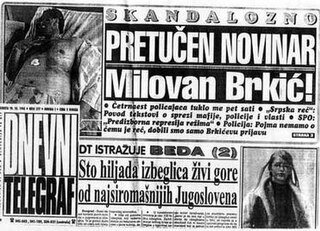
Dnevni telegraf was a Serbian daily middle-market tabloid published in Belgrade between 1996 and November 1998, and then also in Podgorica until March 1999.

Slavko Ćuruvija was a Serbian journalist and newspaper publisher. His murder on 11 April 1999 in Belgrade, FR Yugoslavia provoked international outrage and wide condemnation. In January 2014 two people were arrested and two others named by the Serbian police as suspects in Ćuruvija's murder, including Radomir Marković, former head of the State Security Service (SDB) from 1998 to 2001.

Aleksandar Vučić is a Serbian politician serving as the president of Serbia since 2017, and as the president of the Serbian Progressive Party (SNS) since 2012.
Politika ekspres was a Serbian daily newspaper, published in Belgrade by Politika AD from 1963 until 2005.

Latinka Perović was a Yugoslav communist leader, historian and politician. During the existence of the Socialist Federal Republic of Yugoslavia Perović was a secretary general of the League of Communists of Serbia in period between 1968 and 1972. In 1972 Federal League of Communists of Yugoslavia dismissed her from her position together with Marko Nikezić and Mirko Tepavac under the accusation that they were excessively liberal. Dismissal of Serbian liberals in 1972 followed an earlier dismissal of Croatian nationalists of the Croatian Spring.
Branka is a Serbo-Croatian female given name derived from the Slavic root bran – the same as in Branislav and Branimir – with the meaning "to defend or protect". It can also be a version of the Portuguese name Branca meaning "white". The name Branka became popular in the territory of former Yugoslavia some hundred years ago.

Radislava "Dada" Vujasinović was a Serbian journalist and reporter for the news magazine Duga, published in Belgrade.
Milišić's brickyard was one of four concentration camps in Belgrade in occupied Serbia during World War II. Several thousand people were imprisoned in Milišić's brickyard, mostly partisans from Dalmatia and Bosnia, and around 500 of them died in this concentration camp.
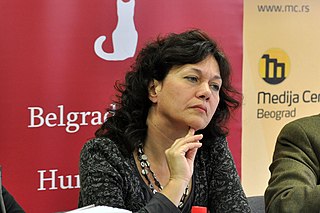
Dubravka Stojanović is a Serbian historian, and professor at University of Belgrade Faculty of Philosophy. She is a vice-president of the Thessaloniki based History Education Committee organized by the Center for Democracy and Reconciliation in South Eastern Europe as well as a consultant of the United Nations on the issues of misuses of history in education. Her primary fields of interest are processes of modernization in Southeast Europe, democratization in Serbia, history of Belgrade, historical memory and presentations of history in history textbooks. In 2015, Dubravka Stojanović received French Ordre national du Mérite.

Informer is a Serbian tabloid newspaper based in Belgrade. It is known for its political bias in favor of the ruling Serbian Progressive Party (SNS) and its sensationalist stories. The newspaper has been accused of spreading disinformation and sensationalism.
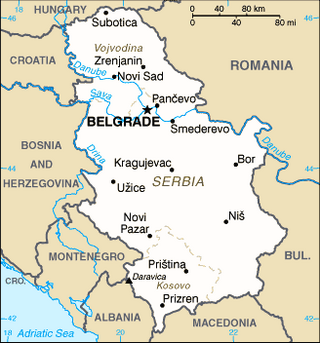
Tourism in Serbia is officially recognized as a primary area for economic and social growth. The hotel and catering sector accounted for approximately 2.2% of GDP in 2015. Tourism in Serbia employs some 75,000 people, about 3% of the country's workforce. In recent years the number of tourists is increasing, especially foreign ones for about hundred thousand arrivals more each year. In 2019, tourism generated an income of nearly $1.698 billion, hosting 3.7 million tourists, half of whom were foreigners. Chinese tourists were the most numerous foreign visitors, followed by tourists from Bosnia and Herzegovina, Bulgaria, Turkey, and Germany. Major destinations for foreign tourists are Belgrade, Novi Sad and Niš, while domestic tourists prefer spas and mountain resorts. Eco-friendly and sustainable tourism has also become very popular among domestic tourists, with many young people visiting various nature reserves and parks in the western and southern part of the country. Serbia is also known for gastronomic tourism, in both urban and rural areas of the country, with Belgrade being the central meeting point with over 1800 restaurants, coffee shops, bars and nightlife venues.

The Lobor concentration camp or Loborgrad camp was a concentration camp established in Lobor, Independent State of Croatia in the deserted palace of Keglevich family. It was established on 9 August 1941, mostly for Serb and Jewish children and women. The camp was established and operated by Ustaše, with 16 of its guards being members of the local Volksdeutsche community. Its inmates were subjected to systematic torture, robbery and murder of "undisciplined" individuals. All younger female inmates of the Lobor camp were subjected to rapes. More than 2,000 people were inmates of this camp, at least 200 died in it. All surviving children and women were transported to Auschwitz concentration camp in August 1942 where they all were killed.

Slobodan Antonić is a Serbian political scientist, sociologist and university professor.

Branka Veselinović was a Serbian actress. Her acting career, including 100 stage performances and 50 film and television productions, spanned more than 80 years. She was a UNICEF ambassador.
Branka Bošnjak is an architect and politician in Serbia. She has served two terms in the National Assembly of Serbia, first as a member of G17 Plus and later with the Social Democratic Party of Serbia (SDPS).
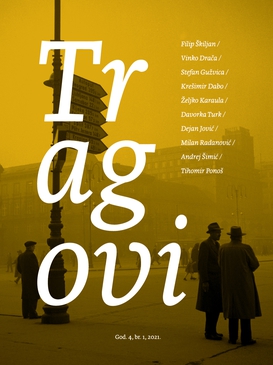
Tragovi: Journal for Serbian and Croatian Topics is a biannual peer-reviewed open access academic journal published by the Serb National Council and the Archive of Serbs in Croatia. The journal publishes papers from various fields of social sciences and humanities focused on Serbian, Croatian, and Yugoslav studies. The goal of initiators was to create a fundus of 350 scientific articles over the period of 20 years which will constitute an unavoidable reference point for the field of studies the journal covers.
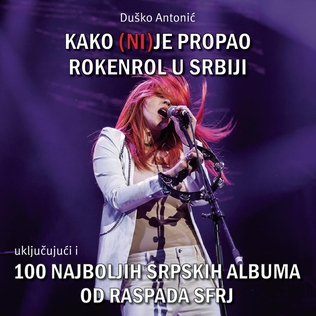
Kako (ni)je propao rokenrol u Srbiji is a book by Duško Antonić, published in 2021. The book features a number of Antonić's essays on Serbian rock scene, as well as a list of 100 best Serbian rock music albums published after the dissolution of SFR Yugoslavia. The list was formed according to the poll of 58 Serbian music journalists and critics, artists and others, similarly to the poll in the 1998 book YU 100: najbolji albumi jugoslovenske rok i pop muzike by Antonić and Danilo Štrbac.